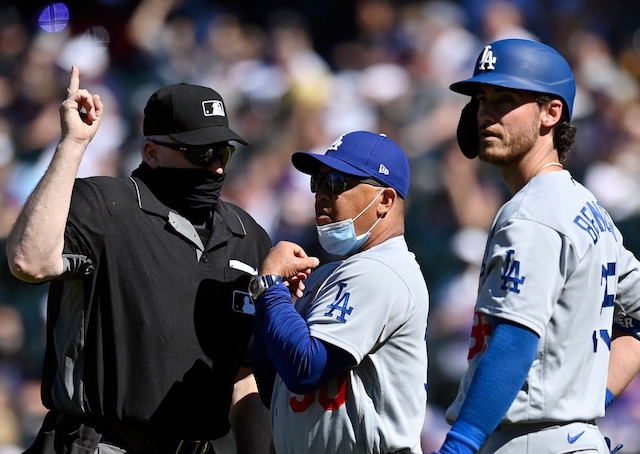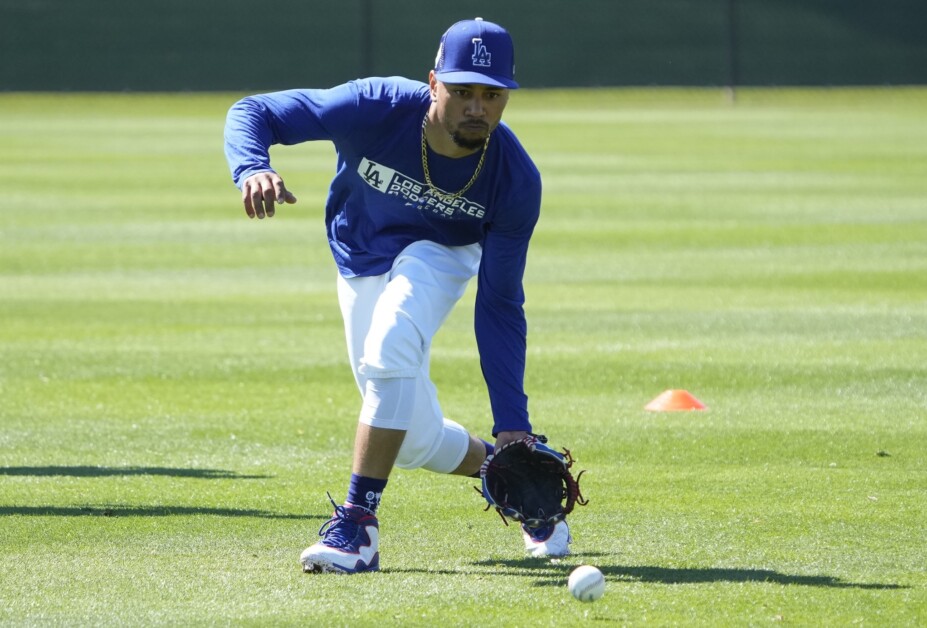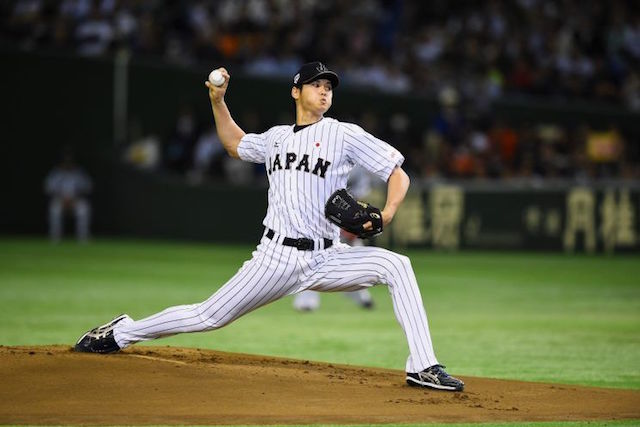The Los Angeles Dodgers and Colorado Rockies playing one another on Opening Day for the first time didn’t take long for the game produce mass confusion on one swing of the bat, which resulted in a home run being taken away from Cody Bellinger.
After Justin Turner singled with one out, Bellinger lifted a deep fly ball to left field. Raimel Tapia appeared to have a read on it and did manage to temporarily make the catch. However, he lost control of the ball upon colliding with the fence, and it carried into the stands.
Turner misread the play and sprinted back toward first base after rounding second and heading for third. However, Bellinger saw what transpired and continued his home run trot, therefore passing Turner on the basepaths.
The umpires were gesturing for an out and Dodgers manager Dave Roberts came from the dugout to inquire on the ruling. Bellinger was credited with an RBI single but also called out.
Cody Bellinger hit a home run with Justin Turner on base, but Turner thought it was caught for an out and ran back to first base.
Bellinger passed Turner on the bases and was ruled out.
The home run counted for one run instead of two. pic.twitter.com/ErecD0td3d
— ESPN (@espn) April 1, 2021
Turner was allowed to round the bases and give the Dodgers a 1-0 lead. “The explanation I got was a ball that ultimately went out of the ballpark, but Cody let the runner past him,” manager Dave Roberts said after the loss.
“So when that happens, the batter is automatically out. … I don’t think there’s blame to be placed. Cody was coming out of the box hard, which he should’ve, and he’s kind of looking at where the ball is at.
“Justin was just passed second base, and when he saw the ball in Tapia’s glove, he retreated and put his head down to get back and not potentially get doubled up. At that point in time they just kind of got crossed.”
MLB rule on bases
Even though the ball Bellinger hit cleared the fence, MLB Rule 5.09 states, “A runner may be deemed to have passed a preceding (i.e., lead) runner based on his actions or the actions of a preceding runner,” which is prohibited.
The sequence is further explained in the MLB rulebook with the following example: Runners on second base and third base with one out. The runner from third base (i.e., the lead runner) makes an advance toward home and is caught in a rundown between third base and home plate. Believing the lead runner will be tagged out, the runner at second base (i.e., the trailing runner) advances to third base.
Before being tagged, the lead runner runs back to and beyond third base toward left field. At this time, the trailing runner has passed the lead runner as a result of the lead runner’s actions. As a result, the trailing runner is out and third base is unoccupied. The lead runner is entitled to third base if he returns to touch it before he is out, see Rule 5.06(a)(1), unless he is declared out for abandoning the bases.
Have you subscribed to the Dodger Blue YouTube channel? It’s the best way to watch player interviews, participate in our shows and giveaways, and more!








